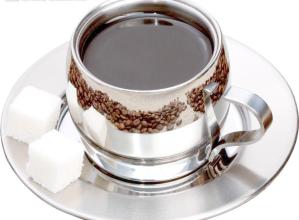Introduction to the Flavor description treatment method of Colombian Ramon Coffee Bean Variety characteristics Grinding scale
Introduction to the Flavor description treatment method of Colombian Ramon Coffee Bean Variety characteristics Grinding scale
Authentic Colombian coffee is brewed with a color as clear as emerald. It is like the masterpiece of the greatest tune, which matches sour, bitter and sweet just right. After drinking, the fragrance fills the whole mouth. The aroma comes out of the nose again. It is so soft and arrogant that it occupies your taste buds, your mind and even your soul as quickly as possible. Let you be captured by it unwittingly.
With its superior geographical and climatic conditions, Colombian coffee has always maintained high quality. Colombian coffee beans, which usually do not have a special market trademark, are from the National Coffee Farmers' Union of Colombia (national federation of colombia coffee growers), a very large alliance that spans Colombia. It has always been famous for its strict quality control and active promotion.
In the Colombian coffee bean grading system, supremo is the highest grade, with the largest and fullest grains in Colombian coffee beans, with very few defective beans and sundries, while excelso is the smaller, more common grade. Colombian coffee has a balanced flavor, rich acidity, unique flavor characteristics, relatively full consistency, sometimes with a touch of red wine flavor and admirable fruit flavor. In Colombia, a small part of coffee comes from the old Tibica or bourbon, which is generally branded by the name of the manor or the name of the processing factory.
Many parts of Colombia are between 1200 and 1800 meters above sea level, with annual rainfall of about 2000 millimeters. Sufficient sunshine and rainfall are very suitable for coffee growth. In recent years, however, Jos é Ramon Corazos, who lives in the southern province of Uila, has gradually discovered that he is producing less and less coffee on his plantation, and the most important factor is global climate change. The rainy season is getting longer and longer and the light is getting less and less, posing a serious threat to the growth of coffee. The increase of Rain Water has also prompted a large number of wild fungi to multiply, "robbing" to occupy the growth space of coffee trees. In response to this situation, scientists have developed eight new varieties of coffee based on genetics, and it is hoped that the annual output of coffee in Colombia will reach 15 million bags in the next four years. Colombia is the world's leading producer and exporter of coffee, and coffee is Colombia's third largest export product earning foreign exchange. Colombia produced 8.9 million bags of coffee in 2010 and 7.8 million bags in 2009, both below the annual average of 11 million to 12 million bags. In order to increase production, 80, 000 hectares of coffee varieties have been renewed in Colombia in 2010, with a target of 100000 hectares in 2011. In 2013, Colombia's coffee production surpassed Indonesia and returned to the third place in the world, after Brazil and Vietnam.

Important Notice :
前街咖啡 FrontStreet Coffee has moved to new addredd:
FrontStreet Coffee Address: 315,Donghua East Road,GuangZhou
Tel:020 38364473
- Prev

Description of Coffee Flavor on Flowers and fruits of Yunnan small Coffee introduction to Grinding scale of Variety characteristics
The western and southern parts of Yunnan Province are located between 15 N and the Tropic of Cancer, most of which are 1000-2000 meters above sea level. The topography is dominated by mountains and slopes, with large ups and downs, fertile soil, sufficient sunshine, rich rainfall and large temperature difference between day and night. These unique natural conditions form the special taste of Yunnan small-grain coffee, which is strong but not bitter, fragrant but not strong, slightly fruity. As early as fifty years
- Next

Introduction of Coffee Flavor description treatment method in Esmeralda Manor of Panama
Panamanian Esmeralda Manor Coffee Flavor description Coffee Variety characteristics the BOQUETE region of Panama, located in CHIRIQUI province on the border with Costa Rica, is the origin of Panama's famous GEISHA coffee and is famous for producing high-quality Arabica coffee. Ted, in the mountain area 4000 feet above sea level in Poggett.
Related
- Detailed explanation of Jadeite planting Land in Panamanian Jadeite Manor introduction to the grading system of Jadeite competitive bidding, Red bid, Green bid and Rose Summer
- Story of Coffee planting in Brenka region of Costa Rica Stonehenge Manor anaerobic heavy honey treatment of flavor mouth
- What's on the barrel of Blue Mountain Coffee beans?
- Can American coffee also pull flowers? How to use hot American style to pull out a good-looking pattern?
- Can you make a cold extract with coffee beans? What is the right proportion for cold-extracted coffee formula?
- Indonesian PWN Gold Mandrine Coffee Origin Features Flavor How to Chong? Mandolin coffee is American.
- A brief introduction to the flavor characteristics of Brazilian yellow bourbon coffee beans
- What is the effect of different water quality on the flavor of cold-extracted coffee? What kind of water is best for brewing coffee?
- Why do you think of Rose Summer whenever you mention Panamanian coffee?
- Introduction to the characteristics of authentic blue mountain coffee bean producing areas? What is the CIB Coffee Authority in Jamaica?

